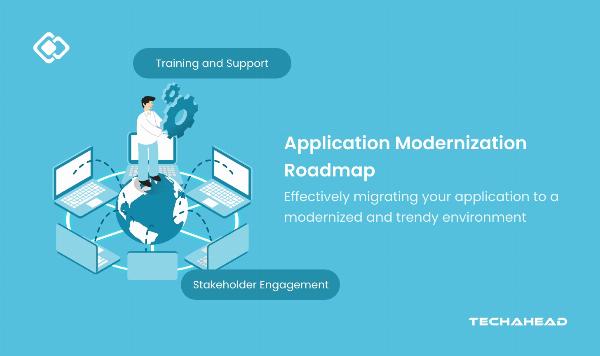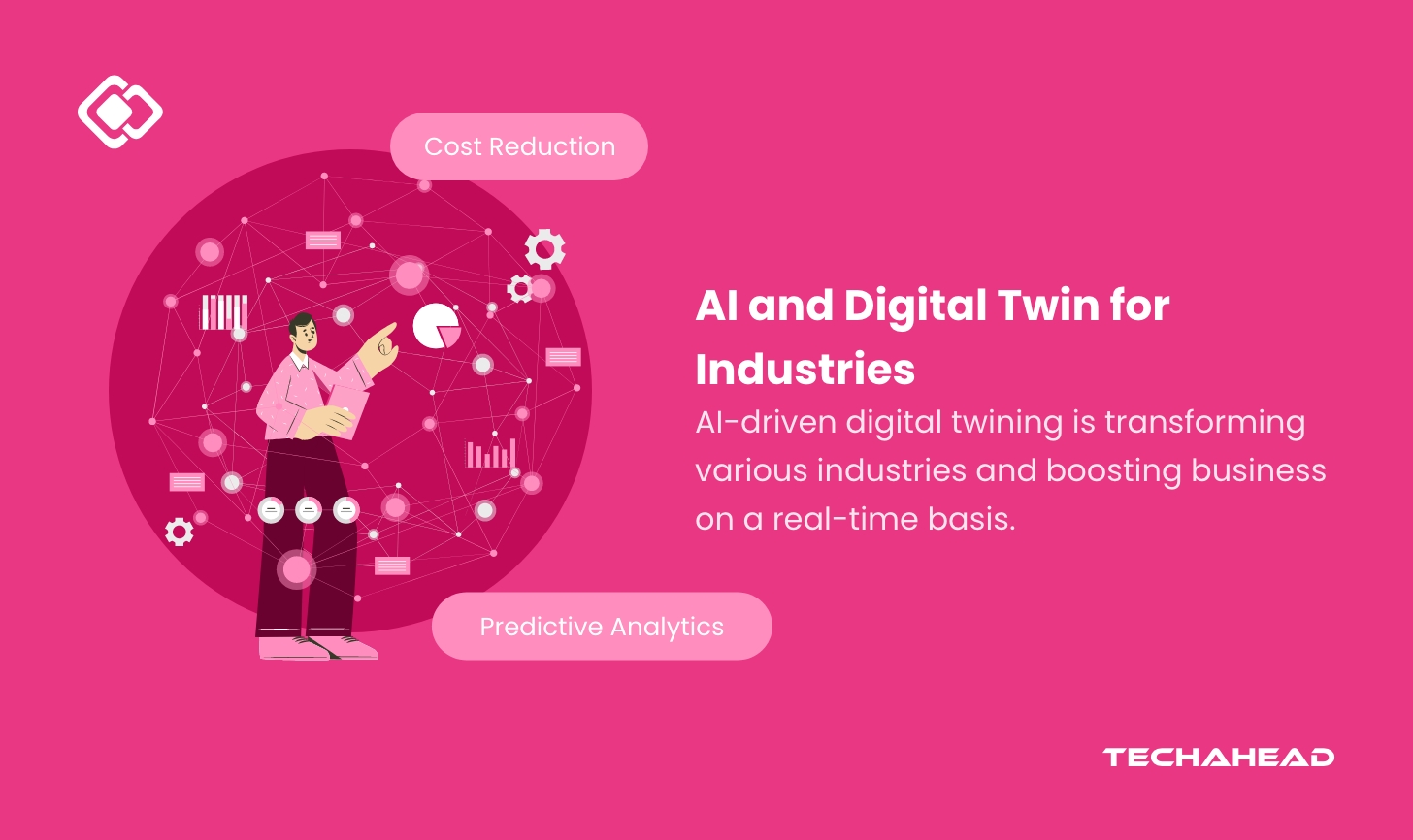 HARO Backlinks – Get Cited Like a Pro in Top Media!
HARO Backlinks – Get Cited Like a Pro in Top Media!
What is NLP? The Role of NLP in Artificial Intelligence and its Future Trends
Written by TeachAhead » Updated on: June 17th, 2025

If you’ve ever used Google Translate, you’ve experienced natural language processing (NLP) in its real action.
NLP is the scientific study of how to create formal models of human language and develop algorithms that can use these models.
The goal of NLP applications, like chat systems, machine translation, and information extraction, is to make sense of unstructured text and allow for organized searches within it.
The NLP market is expected to reach $68.1 billion by 2028, with a compound annual growth rate (CAGR) of 29.3%. (Source: Markets and Markets)
The NLP market size is expected to show an annual growth rate of 27.55%, resulting in a market volume of US$156.80bn by 2030.
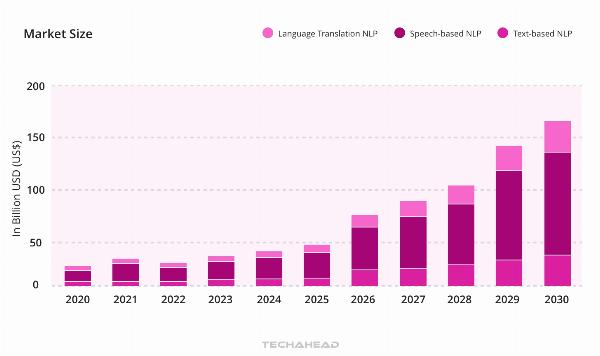
If you’re interested in working with NLP, it’s important to have a solid understanding of probability, algorithms, and multivariate calculus. NLP is all about studying mathematical models that help computers understand how humans learn and use language.
This blog will give an overview of NLP development services. First, let’s learn what natural language processing is.
What is Natural Language Processing?

Natural language processing (NLP) is a type of technology that helps computers understand and work with human language, whether it’s spoken or written. It’s a branch of artificial intelligence (AI) that has been around for over 50 years, with its origin in the study of language (linguistics).
NLP is used in many everyday applications, like search engines, medical research, and business tools. It can use rule-based methods or machine learning to figure out the meaning and structure of text. This technology is behind things like chatbots, voice assistants, translation apps, and business software that help make work easier and more efficient.
Why is Natural Language Processing Important?
Natural Language Processing (NLP) is important because it helps businesses manage and analyze large amounts of text-heavy data. A lot of the information generated online or stored in databases is written in natural human language, which used to be difficult for computers to process. NLP changes that by allowing computers to understand and work with this data.
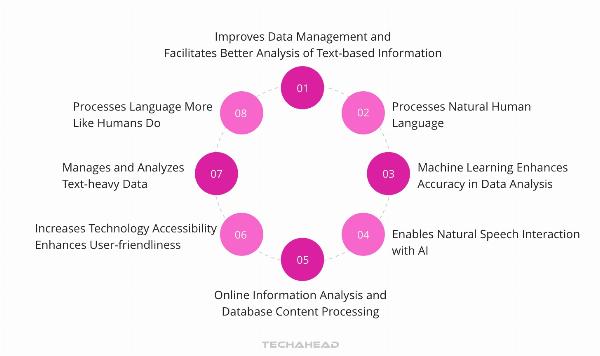
For example, consider these two statements, “Cloud computing insurance should be part of every service agreement” And “A good SLA ensures an easier night’s sleep -- even in the cloud.”
NLP can identify that “cloud computing” and “cloud” refer to the same thing and that “SLA” is short for “service-level agreement.” This ability to recognize different terms and meanings in the language is something that older machine learning algorithms struggled with. However, advances in deep learning and machine learning now allow computers to interpret these nuances better, which means more data can be accurately analyzed.NLP can identify that “cloud computing” and “cloud” refer to the same thing and that “SLA” is short for “service-level agreement.” This ability to recognize different terms and meanings in the language is something that older machine learning algorithms struggled with. However, advances in deep learning and machine learning now allow computers to interpret these nuances better, which means more data can be accurately analyzed.
NLP is also valuable for everyday interactions, like when someone talks to a voice assistant like Siri. Instead of needing to use specific commands, the user can speak naturally, and the GenAI can still understand them. This makes technology more accessible and user-friendly.
Industries Using NLP Development Services
NLP helps businesses by simplifying and automating processes that involve a lot of text, like emails, social media, surveys, and more. This technology allows companies to better analyze their data, helping them make smarter decisions. Here are some examples of how NLP development services are used in different industries.
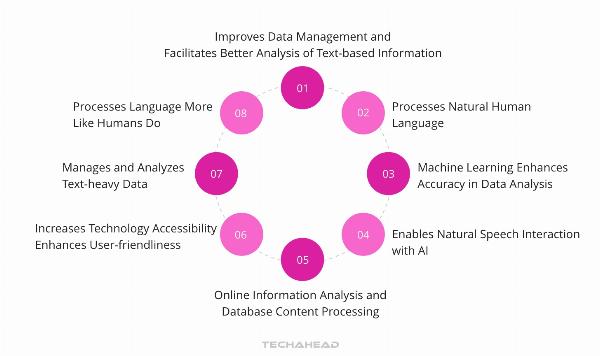
Healthcare
As hospitals and healthcare systems shift to electronic records, they have a huge amount of unstructured data to handle, like doctor’s notes or patient histories. NLP development helps by analyzing this information, making it easier to find important insights about health trends, patient care, or treatment outcomes. This can improve decision-making in both research and patient treatment.
Legal
Lawyers often need to go through countless documents to find key details for a case, which is time-consuming and prone to errors. NLP helps by analyzing this information, making it easier to find important insights about healthcare trends, patient care, or treatment outcomes. This can improve decision-making in both research and patient treatment.
Finance
The financial world is staying ahead of the competition in the market. Traders and financial analysts use NLP to automatically extract valuable information from news articles, corporate reports, and other documents. This helps them make informed decisions about their investments and portfolios quickly, giving them a competitive edge.
Customer Service
Large companies use virtual assistants and chatbots powered by NLP to handle common customer questions, like FAQs or account inquiries. These chatbots can quickly provide answers, improving customer satisfaction. For more complex questions, the system can transfer the customer to a human agent. This reduces the workload for customer service teams while ensuring customers get the help they need.
Insurance
The insurance industry needs a lot of paperwork, especially related to claims. NLP can help by automatically sorting through reports, forms, and other documents to identify important details. This streamlines the claims process, reducing the time and effort needed to handle each case, and making the entire operation more efficient.
In each of these industries, NLP helps save time, reduce errors, and improve decision-making by automating tasks that involve large amounts of text.
Use of AI in NLP Development Services
GenAI development uses NLP which uses many different tasks that help computers understand and work with human language. Some of the main things NLP can do include:
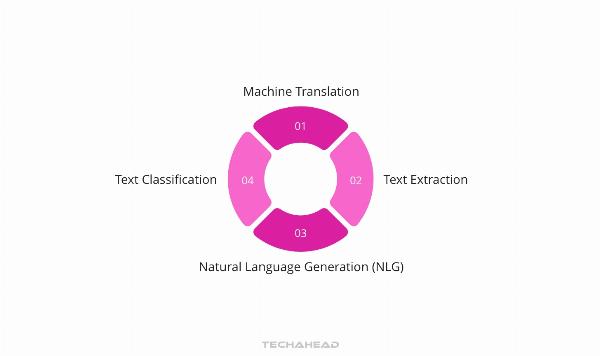
Text Classification
This involves sorting texts into categories by tagging them. For example, it can be used for sentiment analysis, which helps determine the emotion behind a text. If a brand is mentioned in many texts, the algorithm can identify how many of those mentions are positive or negative. Text classification can also predict a person’s intent based on what they’ve written.
Text Extraction
This process summarizes text and pulls out key information. One example is keyword extraction, which identifies the most important words in a text, often used in search engine optimization. Another example is entity recognition, where the algorithm identifies names of people, places, or other important items within a text.
Machine Translation
This allows computers to translate text from one language to another, like converting English into French, without human help.
Natural Language Generation (NLG)
NLG creates content by analyzing unstructured data and generating new text. An example is using a language mode; like GPT-3 to generate realistic articles based on the data it has learned.
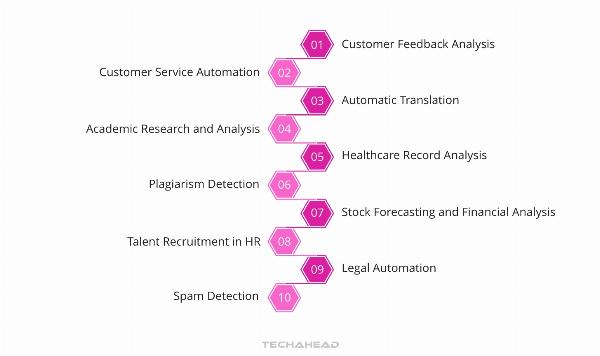
These NLP functions are applied in various real-world scenarios, such as:
- Customer feedback analysis: AI tools can review social media comments and sort through customer feedback for businesses to respond to.
- Customer service automation: Voice assistants in customer service can use speech recognition to understand what customers are saying and direct their calls accordingly.
- Automatic Translation: Services like Google Translate and Bing Translator can convert text, audio, or documents into other languages instantly.
- Academic Research and Analysis: AI tools can go through large volumes of academic research and analyze both the content and metadata for key insights.
- Healthcare Record Analysis: AI-powered tools can analyze patient records to find trends and even help predict or prevent diseases.
- Plagiarism Detection: Tools like Copyleaks and Grammarly use AI to check documents for copied content and plagiarism.
- Stock Forecasting and Financial Analysis: NLP tools can review market data and company reports to help predict stock movements and financial trends.
- Talent Recruitment in HR: AI tools can speed up hiring by automating the process of finding and screening job candidates.
- Legal Automation: AI-powered tools can perform legal research, identify issues, and summarize cases faster than human attorneys.
- Spam Detection: NLP-enabled tools can detect text that is commonly used in spam or phishing messages, such as bad grammar, misspellings, or urgent calls to action.
Techniques and Methods of NLP Development Services
NLP relies on two main techniques: Syntax and Semantic Analysis, to understand and process language.

Syntax
Syntax focuses on the structure and arrangement of words to make grammatically correct sentences. NLP uses syntax to interpret language based on grammar rules. Some common syntax techniques are:
Parsing: This involves breaking down a sentence into parts of speech. This step is crucial for understanding more complex language tasks.
Word Segmentation: This technique involves separating a continuous string of text into individual words. For example, if you scan a handwritten document into a computer, the algorithm can recognize spaces between words and divide them accordingly.
- Sentence Breaking: This technique helps determine where sentences start and end in a long block of text.
- Morphological Segmentation: This method breaks words down into smaller meaningful units called morphemes. These are tasks like machine translation and speech recognition.
- Stemming: It reduces words to their base or root form. This helps identify different forms of the same word as related.
Semantics
Semantics is about understanding the meaning of words and sentences. NLP development services apply algorithms to analyze the meaning behind the language. Some common semantic techniques include:
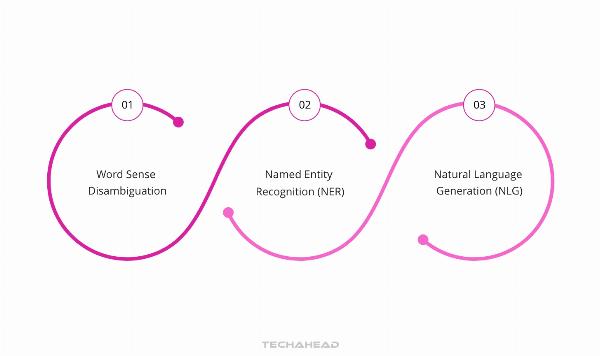
- Word Sense Disambiguation: This technique determines the meaning of a word based on its context.
- Named Entity Recognition (NER): NER identifies and categorizes words into groups, such as names, places, or organizations.
- Natural Language Generation (NLG): NLG creates new text by understanding the meaning of words.
Deep Learning in NLP
Modern NLP development services techniques rely heavily on deep learning, a branch of AI that uses patterns in data analytics to improve a program’s ability to understand language. Deep learning requires vast amounts of labeled data to train algorithms and help them identify meaningful patterns. One of the biggest challenges in NLP is collecting and organizing this massive amount of data.
In the past, NLP development services and methods were more rule-based. They used simpler machine learning algorithms that were specifically instructed on what to look for in text and how to respond to certain phrases. Today, deep learning allows algorithms to learn language patterns more intuitively by analyzing many examples, similar to how a child learns language.
Common NLP Tools
Three popular open-source tools for NLP are:

- Natural Language Toolkit (NLTK): A Python library with datasets and tutorials for the NLP development model.
- Gensim: A Python library used for topic modeling and document indexing.
- NLP Architect by Intel: A Python library focused on deep learning methods for NLP tasks.
These tools help developers build powerful NLP applications by providing resources and frameworks to work with.
Challenges of NLP Development Services
NLP development services face several challenges because human language is always changing and can be ambiguous. Some of the main difficulties include:

Precision
Computers are used to swallowing exact commands, like in programming languages where everything needs to be clear and structured. But human language isn’t always precise. It can be ambiguous and influenced by things like slang, religious dialects, and social context, making it harder for computers to understand.
The tone of Voice and Inflection
NLP isn’t perfect when it comes to picking up on tone or inflection. For instance, sarcasm and abstract language can be difficult for algorithms to interpret. The meaning of a sentence can change depending on which word or syllable is stressed, and NLP can miss these subtle changes. Differences in accents can also make it harder for speech recognition systems to accurately understand a speaker.
Evolving Language
Language is constantly changing, and this poses a challenge for NLP systems. While there are language rules, they aren’t set in stone and can evolve. This means that rules that work well now may not be effective in the future as language changes.
Bias
NLP systems can inherit biases from the data they are trained on. This can be problematic, especially in sensitive areas like healthcare and hiring, where biased algorithms might lead to discrimination against certain groups of people.
Benefits of NLP Development Services in AI
NLP offers several advantages that can improve efficiency and accuracy across various tasks. Some of the key benefits include:

Improved Documentation Efficiency and Accuracy
NLP can automatically create accurate summaries of text, something humans would struggle to do quickly. It can also handle repetitive tasks, like analyzing large amounts of data, to help people work more efficiently.
Summarizing Large and Complex Text
NLP can handle simple tasks, like extracting key facts from documents or analyzing sentiment. It can also tackle more complex tasks, such as understanding human behavior and emotions from text.
Powering Personal Assistants Like Alexa
NLP allows virtual assistants like Alexa to understand and respond to spoken commands. It also helps quickly search through massive databases to find relevant information in just seconds.
Enabling Chatbots for Customer Support
NLP is used in chatbots, which are AI programs that communicate with people through text or voice. These chatbots understand what people are typing and provide appropriate responses, allowing businesses to offer 24/7 customer support across multiple platforms.
Simplifying Sentiment Analysis
Sentiment analysis uses NLP to assess documents, such as social media posts or reviews, and determine the overall emotion behind them (e.g., positive, negative, or neutral). This helps in categorizing content more effectively.
Unlocking Advanced Analytics
With the rise of sensors and internet-connected devices, a vast amount of data is generated. NLP helps organizations analyze this data, which leads to better business insights and decision-making.
Conclusion
In conclusion, natural learning processing has greatly revolutionized how people interact with machines. That makes the communication more natural and efficient. NLP development services include a variety of techniques that help systems to understand, process, and generate human language.
Whether it is simply analyzing emotions or translating languages, NLP has impacted different industries.
The innovation, especially in machine learning and AI app development has brought the possibilities for NLP to improve human interactions and solve language barriers.
Learning the basics of NLP is important but how it will help your mobile app development can only be resolved with TechAhead. We have been creating and curating the best tech that is available in the market.
You can be the next tech giant that uses AI powers in their business.
Original Source: https://www.techaheadcorp.com/blog/natural-learning-processing-in-artificial-intelligence/
Note: IndiBlogHub features both user-submitted and editorial content. We do not verify third-party contributions. Read our Disclaimer and Privacy Policyfor details.
Copyright © 2019-2025 IndiBlogHub.com. All rights reserved. Hosted on DigitalOcean for fast, reliable performance.




